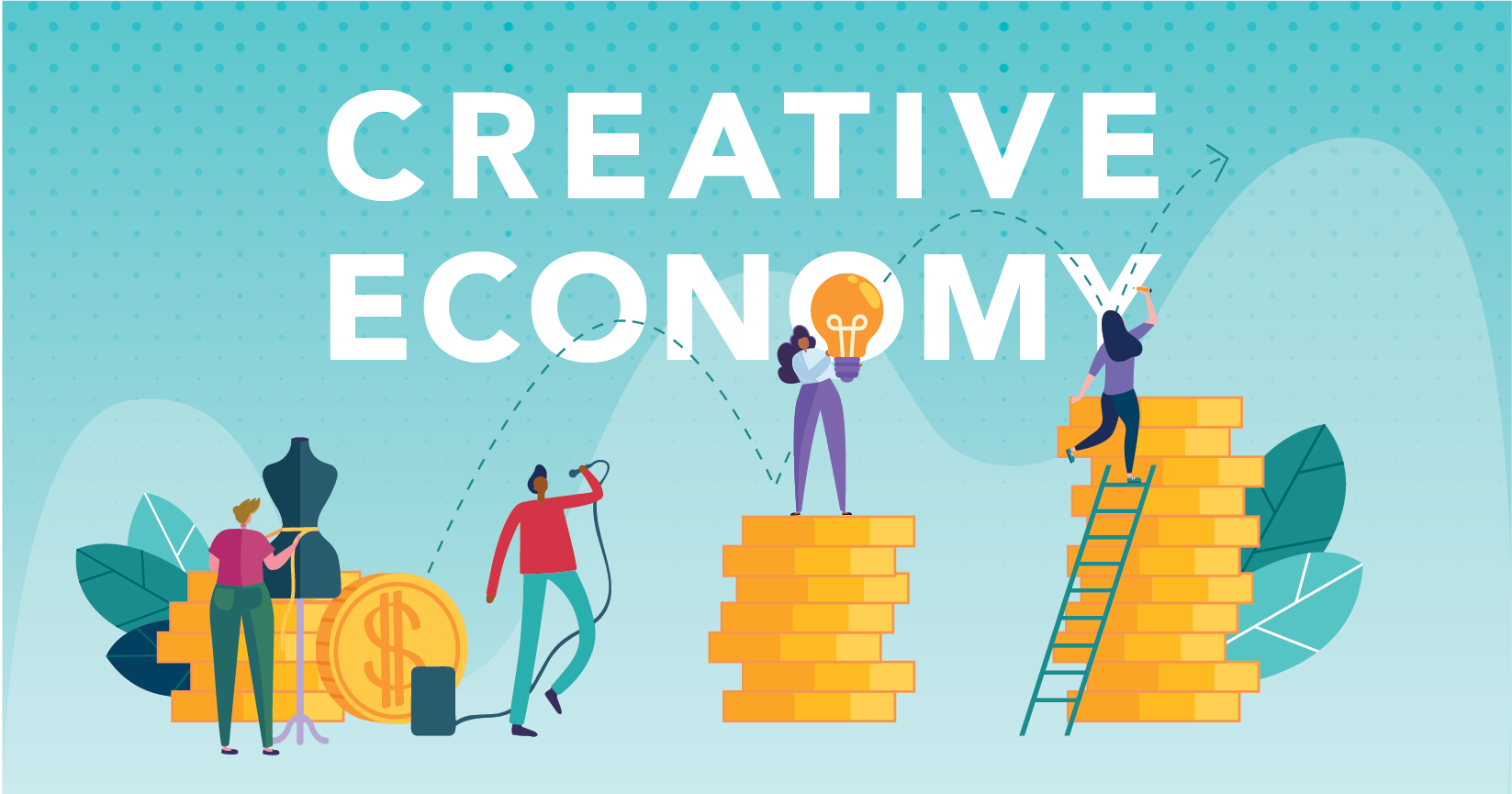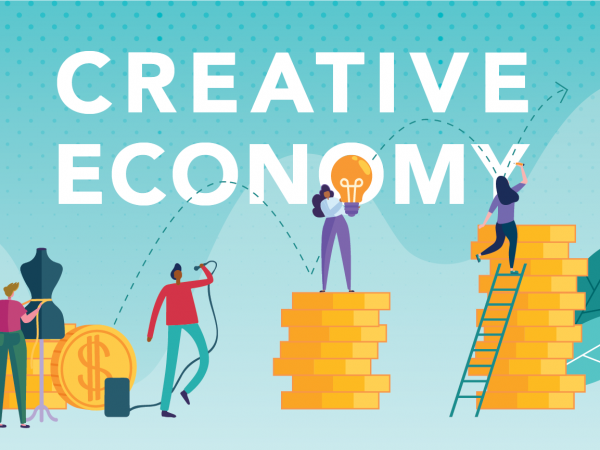
KEYNOTE/POSITION STATEMENT DELIVERED by YAHAYA MAIKORI [Partner LawAllianz ]
AT THE EUROPEAN UNION NATIONAL INSTITUTES OF CULTURE’S CLUSTER REGIONAL MEETING
ON THE 11TH DAY OF OCTOBER, 2012
The honorable Commissioner of Tourism, Lagos State, the EUNIC president and EUNIC Cluster representatives, the Director General, Nigerian Film and Video Censors board, the Country Director of the various foreign cultural organizations, my fellow speakers, ladies and gentlemen. It is a great honour for me to be delivering the Keynote at this very special occasion, in honor of the Nigerian creative industry.
According to the UNCTAD creative report “Usage of the term “creative industries” varies among countries. It is of relatively recent origin, emerging in Australia in 1994 with the launching of the report, Creative Nation. It gained wider exposure in 1997, when policymakers at the United Kingdom’s Department of Culture, Media and Sport set up the Creative Industries Task Force.
The designation has since broadened in scope beyond the arts and has marked a shift in approach to potential commercial activities that were not previously regarded purely or predominantly in non-economic terms.
For the purposes of this address, I will be adopting the formal classification of the Creative Industries, as developed by The United Nations Development Program (UNDP). According to this classification the Creative Industries comprise four key segments as follows:
First is Heritage: which include traditional cultural expressions, arts and crafts festivals and celebrations. Heritage also includes Cultural sites, museums, libraries and exhibitions.
Next is the Arts: these include visual arts, paintings, scultpture, photography and antiques as well as performing arts i.e live music, theatre, dance, opera and circus.
Thirdly we have Functional Creations: including, interior, fashion and graphic design among others. It also includes new media such as video games, soft ware, e books and other digitalized creative content.Fourth under the UN classification of Creative Industries is Media: this covers publishing and print media, books, press and other publications, films, television, radio and other broadcasting media.
I highlight these just to put a context into our discussions of the Creative Industry.
In the past decade, the Creative Industries have moved further towards the center stage in terms of its recognition as a major driver of socio-economic and cultural development of Nations and as well it should be, as creativity can also be defined as the process by which ideas are generated, connected and transformed into things that are valued.
The major drivers responsible for the extraordinary growth in the creative industries worldwide can be found in both technology and economics. The technological transformations in communications brought about by the digital revolution and the economic environment within which this revolution has taken place have combined to create the conditions for this growth. The convergence of multimedia and mobile telecommunication technologies has led to an integration of the means by which creative content is produced, distributed and consumed and has in turn fostered new forms of artistic and creative expression.
Over the period 2000-2005, international trade in creative goods and services experienced an unprecedented average annual growth rate of 8.7 per cent. However, African countries account for only 1% of this global export .
The Nigerian Creative Economy can be traced back before the advent of Colonialism, before the very constitution of Nigeria as it is currently configured. Nok, Terra Cota 500BC – 200AD and Benin Carvings proved to be both culturally and commercially viable both within and outside the shores of Nigeria. This however evolved in silos of creativity, which in themselves were highly fragmented and have largely remained so.
The first time there was an organized gathering with a focus on the creative industries in Nigeria was in 1977, during the Festival of Arts & Culture or FESTAC celebration. Ever since then the industry has more or less evolved in a largely unstructured manner.
The current explosion is ignited by an ongoing renaissance, fueled by the quest for cultural identity, driven by a youthful population who are creatively inquisitive and sustained by the digital, technology and telecoms revolution.
Unemployment is also one of the subtle catalyst of this industry.
FILM
The Nigerian film industry, which is euphemistically known as “Nollywood”, is known to be the most prolific film industry in the world. In 2005 according to World Bank figures officially overtook both Hollywood and Bollywood to become the 3rd largest film industry in terms of the number of films produced on a yearly basis. Following closely to Nollywood is another emerging and relatively unknown film industry called “Kannywood” coming from the Northern part of the country – this industry seems poised to surpass that of Nollywood.
Nollywood is reputed to have started totally be accident with a film called “living in bondage” 1992 by NEK Video Links owned by Kenneth Nnebue in the eastern city of Onitsha. Nnebue had imported a large number of blank video cassettes that he could not sell and came up with the idea of recording something on them to make them more marketable. The huge unexpected success of this film set the scene for others to produce similar films or home videos
Before these film makers we had the likes of Herbert Ogunde ,Eddie Ogboma to name a few.Typically a Nollywood film is shot within 15 – 20, days on location, with an average budget of $30,000 and it is released straight to DVD.
The film industry which has the most potential in terms of financial benefits has unfortunately had the least returns for reasons which I will highlight shortly – it is however pleasing to see a gradual shift in Nollywood’s value chain. Instead of a straight – to – DVD release, a new crop of movie directors have started targeting cinema releases both as an anti-piracy measure and as a means of trapping new revenue streams.
“Ije” is a case in point, shot with a budget of $1,500,000, it premiered in Europe ,USA and made about $100,000 in box office receipts alone . The movie shot on 35mm, has already made headway, winning several awards which include Excellence in Filmmaking (Canada International Film Festival and Hawaii International Film Festival) etc Since this film a host of other films have taken this new route.
MUSIC
Nigeria music has several genres which include highlife, afro beats, apala, juju, fuji etc but the music consumed by Nigerians then were predominantly foreign music i.e. R N B, pop ,reggae which were promoted by such international record companies such as Sony music, EMI ,polygram etc until piracy drove them away ;suffice to say that between the 60 – late 80s Nigeria had a thriving music industry – Our industry was actually acknowledged by no other person than Richard Branson in his biography “Like a virgin”.
During that period Nigeria produced its biggest indigenous export – Fela Anikulakoputi (know for Afro beats), Sunny Ade during that period garnered 2 grammy nominations until Femi Kuti recent nominations.
For another decade the industry lay fallow with the disappearance of these record companies, until a company called KENNIS music signed a group of artists called The Remedies in 1999. This group basically fused as well as experimented with various indigenous Nigeria, African and popular foreign genres like hip hop while singing and rapping in pigeon English. This along with cheap CD duplicating plants signaled the emergence of Nigeria’s contemporary music.
The music has now come to been known as “Afro beats “ and it is widely available all over Africa and Europe and but unlike Nollywood its is known for its high quality production values and its commercial appeal. It is not unusual to hear Nigeria music being played in Selfridges or any of the FM stations in UK or the streets of Monaco.
As more of Nigerian music finds its way to such global platforms, Lots of Nigerian artists are snacking up international recording deals with companies like the Universal Music Group as well as getting the deserved recognition with such international wards like the BET,MTV Europe, MOBOs etc Touring Africa, Europe and America has become part of the schedule of most successful Nigerian artists.
Afro beats contributes about 50 % of the African content on such cable channels as Trace Tv, Channel O,Mtv Base Africa.
FASHION
From time immemorial clothing was solely used for covering up of the body and for protection from heat or cold or other environmental factors.In Africa, apart from the use of clothes for decoration of the body, the body was equally adorned with painting, tattooing or by the wise use of jewelry.
In recent years several fashion houses are emerging with designs and creations done with local fabrics and materials like batik ,tie and dye,adire,Aso Oke with embroidery for western designs, contemporary interpretation of old traditional wear .head gears like gele ,Jewelry like coral beads ,stones ,precious stones Labanella ,Olujimi King , Olujimi King was one of the very early designers who started using African fabrics for contemporary styles.
At a time, when many were still using the ankara and aso-oke for traditional iro and buba, he was already making jackets, waits coats, modified buba – and sokoto to suit international markets.
The industry I broken into pret a porter, fashion institutes, haute couture, though high street fashion is yet to develop. This is the prestigious Arise Fashion show which have been staged in during the New york fashion where Nigerians have exhibited at major fashion shows across the world ,this year a fashion label Jewel by Lisa was selected by Vogue italia to participate in its “who is next” talent hunt – It’s not unusual to see Hollywood stars adorning fashion pieces from Nigeria designers.
While these three sectors do not represent the whole industry they are key drivers of the Nigeria Creative industry ,they do not only symbolize the trends in each of the other sub sectors but they are the pillars on which the rest of the sectors revolve around i.e photographers ,media ,graphics,designs etc .
CHALLENGES
So what are the challenges of the Nigeria Creative industry? Irrespective of the sector it appears that their challenges are similar and only vary by context
1.Piracy /LACK OF APPRECIATION OF INTELLECTUAL PROPERTY RIGHTS
During the 1980s many international record labels such as Polygram and EMI decided to leave Nigeria due to rampant piracy coupled with the availability of new data storage technologies (e.g. Compact Discs, Digital Video Discs contrasted to Audio Cassettes) which provide an easy opportunity for unlicensed individuals, to copy and mass produce songs and movies etc.
Most Intellectual Property right owners do not appreciate the value of their rights and therefore unable to protect or enforce their rights; the enforcement agencies and even pirates and other types of infringers do not understand the philosophy behind Intellectual Property.
Though the last time the Copyright Act was reviewed was about 10 years ago, it is strong enough to provide the protection and enforcement tools required by IP owners.
Also the perceived weakness of the Nigeria Copyrights Commission is changing – in the last one year the commission has secured 27 convictions against pirates, now this is a positive development when juxtaposed with the 3 convictions recorded previously by the commission.
Furthermore, The Nigeria Copyright Commission is about to launch its copyright reforms roadmap next month.
2.ACCESS TO FINANCE
The industry has almost no access to formal financing mechanisms. The independent, self- employed producers generally re-invest the revenues earned from one film for the next one. Due to the unpredictable nature of the profitability of a film, banks and other financial institutions do not have models for assessing the creditworthiness of these projects. This significantly hampers the growth of the industry and discourages producers from innovating and pushing the boundary in terms of quality.
The intangibility of the Intellectual Property rights makes it difficult for financial institutions to collateralize.
Recently, the Federal Government of Nigeria in a show of recognition of the potential benefit of the industry set up the $200,000,000 entertainment intervention fund to help drive the industry, the fund is yet to make any impact as the disbursing banks have insisted on tangible assets as collateral thereby negating the intention of the fund.
3. DISTRIBUTION:
Proper and credible distribution channels are almost nonexistent. This prevents the industry from reaping its full financial benefit. At the moment there are few formal distribution channels accessible to consumers and this applies to all of the above sectors.
For example Nigeria is home to only a few formal cinemas in a few major cities which predominantly cater for international releases, 99 percent of screenings are therefore in informal settings therefore box office receipts remain marginal. According to the NFVCB, there are 6,8412 registered video parlors with a further 200,000 unofficial parlors
The quality of most Nigerian movies do not to qualify for screening in such cinemas.
Note however alternative digital distribution platforms are emerging from indigenous entrepreneurs like Iroking, spinlet and google /youtube has also been at the forefront of providing online platforms
4. QUALITY:
Poor and low quality standards, low budget of an average of 30,000 per film and short production times. The vast majority of Nigerian movies are not produced in studios and the duration of shooting generally ranges from 10 to 20 days. So the entire process of making a film is usually completed within 4 to 5 weeks. Most films are shot on location all over Nigeria with hotels, homes and offices often rented out by their owners and appearing in the movie credits. Using such locations it is very difficult to provide quality sound and lighting. Shooting is often also restricted by the other activities that are going on at the location.
5.MONETIZATION OF CONTENT /PRODUCT
It is reported that Nigerian movies are widely shown all over the African continent on national broadcasting networks without payment of any royalties to the original filmmakers.
What about music? The same applies, while our music is played all over Africa and Europe no royalty has accrued to the artists.
Fortunately, Copyright Society of Nigeria, which was recently licensed, has already started generating revenue for musician and the Copyright Commission is about to license the first audio – visual Collection Management Organization in Nigeria.
Several other revenue streams remain untouched in this industry, Until the industry can capture a greater proportion of the revenue streams it will be consigned to making low-budget, low-quality productions and will not have the ability to scale-up its operations and provide a larger number of well-paid jobs for Nigeria’s youth.
6.LACK OF RELIABLE DATA
Of all the challenges highlighted above, this remains the most critical of all, without reliable data any projections or interventions in the industry make the exercise mere conjecture and guess work.
I am however aware that the British council with the support of some local institutions have commenced the process of mapping our creative industry.
7. $200,000,000 GOVERNMENT INTERVENTION
While this intervention was a good initiative ,the government did not address the multifaceted problems bedeviling the industry and it ended up been a good government gesture.
I have tried as much as possible to highlight (without going into to much details) a brief history, trends and the accompanying challenges in the Nigeria creative industry.
There is no doubt that the Nigerian Creative Industry has come a long way, and I applaud the efforts of cultural organizations such as the British Council, Goethe Institute & Alliance Francais.
While the journey ahead of us may be long and tedious, we shall console our selves with the Chinese proverb which says that “the journey of a thousand miles starts with one step” .
Without pre-empting the direction of this discourse I will need to quickly add the following for your information:
– Nigeria is estimated to have a population of 167,000,000
– 70% of the population are under the ages of 30 (demographic asset )
– Youth unemployment accounts for about 25% – 40% of the working population depending on the states
– Nollywood alone employs about 1,000,000 direct and indirectly (next only to agriculture)
– The creative industry accounts for 5%GDP out of the 11% of non oil exports
– Because of the poor structure it is estimated the the creative industry is loosing about $200,000,000 in North America and Europe each
– There are a 100,000,000 active mobile subscribers,7 million Facebook users and ranks 31 Facebook statistics (according to country usage (social bakers),
In closing, I will like to wish us all a very productive time out; I have seen the lineup of speakers, I am very expectant and am sure we are in for a very insightful session today. It is my hope that we will move this beyond just highlighting the action points to actually taking action within our various spheres of influence.
Thank you once again for having me.
God bless.


